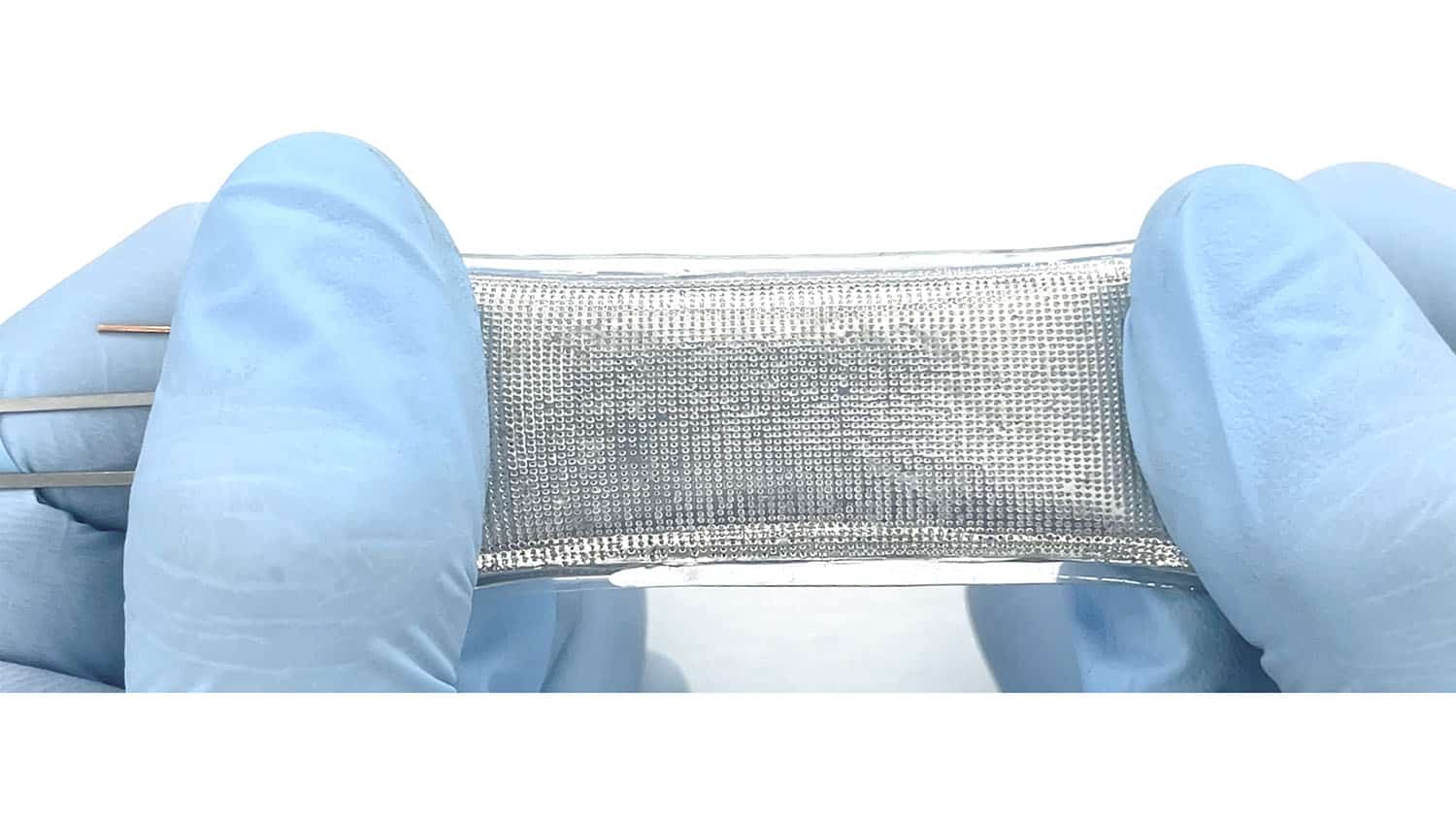Researchers Develop Elastic Material That Is Impervious to Gases and Liquids

For Immediate Release
An international team of researchers has developed a technique that uses liquid metal to create an elastic material that is impervious to both gases and liquids. Applications for the material include use as packaging for high-value technologies that require protection from gases, such as flexible batteries.
“This is an important step because there has long been a trade-off between elasticity and being impervious to gases,” says Michael Dickey, co-corresponding author of a paper on the work and the Camille & Henry Dreyfus Professor of Chemical and Biomolecular Engineering at North Carolina State University.
“Basically, things that were good at keeping gases out tended to be hard and stiff. And things that offered elasticity allowed gases to seep through. We’ve come up with something that offers the desired elasticity while keeping gases out.”
The new technique makes use of a eutectic alloy of gallium and indium (EGaIn). Eutectic means that the alloy has a melting point that is lower than its constituent parts. In this case, the EGaIn is liquid at room temperature. The researchers created a thin film of EGaIn, and encased it in an elastic polymer. The interior surface of the polymer was studded with microscale glass beads, which prevented the liquid film of EGaIn from pooling. The end result is essentially an elastic bag or sheath lined with liquid metal, which does not allow gases or liquids in or out.
The researchers tested the effectiveness of the new material by assessing the extent to which it allowed liquid contents to evaporate, as well as the extent to which it allowed oxygen to leak out of a sealed container made of the material.
“We found that there was no measurable loss of either liquid or oxygen for the new material,” says Tao Deng, co-corresponding author and Zhi Yuan Chair Professor at Shanghai Jiao Tong University
The researchers are also conscious of costs associated with manufacturing the new material.
“The liquid metals themselves are fairly expensive,” Deng says. “However, we’re optimistic that we can optimize the technique – for example, making the EGaIn film thinner – in order to reduce the cost. At the moment, a single package would cost a few dollars, but we did not attempt to optimize for cost so there is a path forward to drive cost down.”
The researchers are currently exploring testing options to determine whether the material is actually an even more effective barrier than they’ve been able to show so far.
“Basically, we reached the limit of the testing equipment that we had available,” Dickey says.
“We’re also looking for industry partners to explore potential applications for this work. Flexible batteries for use with soft electronics is one obvious application, but other devices that either use liquids or are sensitive to oxygen will benefit from this technology.”
The paper, “Liquid Metal-Based Soft and Hermetic Seals for Stretchable Systems,” is published in the journal Science. Co-first authors of the paper are Qingchen Shen, a former visiting scholar at NC State who is at Shanghai Jiao Tong University; Man Hou Vong, a Ph.D. student at NC State; and Modi Jiang, Ruitong Wang and Kexian Song of Shanghai Jiao Tong University. Co-corresponding authors of the paper are Dickey; Deng; Wen Shang of Shanghai Jiao Tong University; and Jun Wang of A123 Systems. Co-authors include Febby Krisnadi, a Ph.D. student at NC State; Woojing Jung, a former visiting scholar at NC State; and Ruyu Kan, Feiyu Zheng, Benwei Fu, Peng Tao, Chengyi Song and Guoming Weng of Shanghai Jiao Tong University, and Bo Peng of A123 systems.
The work was done with support from the National Science Foundation, under grant CMMI- 2032415; the National Natural Science Foundation of China, under grants 51873105 and 51973109; the Innovation Program of the Shanghai Municipal Education Commission, under grant 2019-01-07-00-02-E00069; the Zhi-Yuan Endowed fund from Shanghai Jiao Tong University; and Shanghai Jiao Tong University Overseas Study Grants. The work received additional support from the National Science Foundation through the ASSIST Engineering Research Center at NC State, under grant number EEC-1160483.
-shipman-
Note to Editors: The study abstract follows.
“Liquid Metal-Based Soft and Hermetic Seals for Stretchable Systems”
Authors: Qingchen Shen, Shanghai Jiao Tong University and North Carolina State University; Man Hou Vong, Woojin Jung, Febby Krisnadi and Michael Dickey, North Carolina State University; Modi Jiang, Ruitong Wang, Kexian Song, Ruyu Kan, Feiyu Zheng, Benwei Fu, Peng Tao, Chengyi Song, Guoming Weng, Wen Shang and Tao Deng, Shanghai Jiao Tong University; Bo Peng and Jun Wang, A123 Systems.
Published: Feb. 3, Science
DOI: 10.1126/science.ade734
Abstract: Soft materials tend to be highly permeable to gases, making it difficult to create stretchable hermetic seals. With the integration of spacers, we demonstrate the use of liquid metals, which show both metallic and fluidic properties, as stretchable hermetic seals. Such soft seals are used in both a stretchable battery and a stretchable heat transfer system that involve volatile fluids, including water and organic fluids. The capacity retention of the battery was ~72.5% after 500 cycles, and the sealed heat transfer system showed an increased thermal conductivity of approximately 309 watts per meters-kelvin while strained and heated. Furthermore, with the incorporation of a signal transmission window, we demonstrated wireless communication through such seals. This work provides a route to create stretchable yet hermetic packaging design solutions for soft devices.


